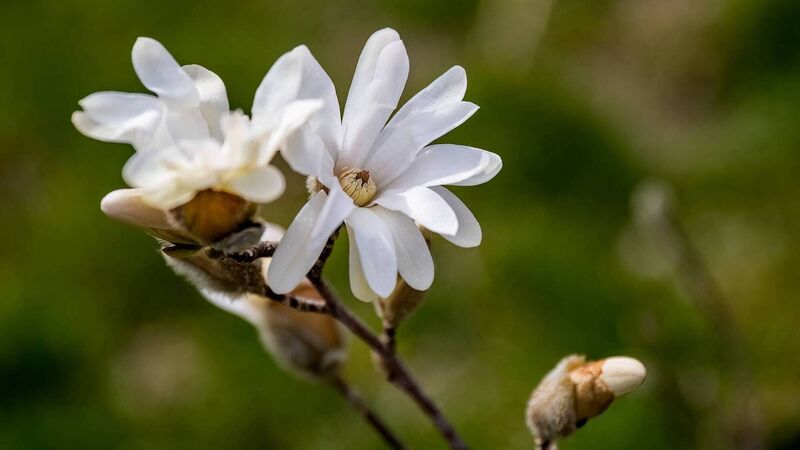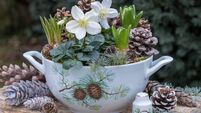Peter Dowdall: What the September heatwave means for your garden

The recent fine weather may mean that we will see some plants, like this magnolia, synonymous with spring, blooming out of season. Picture: iStock
FIVE or more continuous days where the temperature reaches over 25 degrees constitutes a heatwave in Ireland, to the best of my knowledge.
Last week we had a Yellow Warning for heat in Ireland. It’s September. Good weather during September isn’t unusual, in fact, (and I have no idea whether the statistics back me up or not) I tend to think of September as our best month in terms of sunshine. I remember well, being just back in school and enjoying the sunshine but perhaps, that’s more a case of having forgotten all the rainy Septembers and only remembering the good ones, who knows?
I’ve even written before about renaming the term “Indian summer” to “Irish summer”, as good Septembers seem to be so commonplace here. However, what’s different this year is the heat. Normally a good September may bring sunshine and dry weather but temperatures would normally be in the high teens or perhaps low 20s. This year we have seen the mercury reach closer to 30.
Unheard of in Ireland at nearly any time but particularly in September. What will this mean for our gardens? Well, as it is uncharted territory, the answer will have to be, wait and see.
We often see some errant rhododendrons, camellias and magnolias showing a few blooms in autumn and early winter instead of during the spring time which is when they are expected. This is also to do with our weather. These and other spring flowering shrubs and trees, form their flower buds in late summer for flowering the following spring.
What sometimes happens, particularly if the late summer months were particularly cold and wet and if the early autumn months are fine, is that the plants get confused and think that spring has arrived when it is actually still autumn or winter.
I suspect we will see much more of that this year as the exceptionally high temperatures will encourage many spring flowers to bloom early.
This may seem like nothing more than a peculiarity and something to admire out of season just something of interest, however, plants flowering at the wrong time of year has far-reaching consequences. You see, as we all know, the amazing tapestry of which we are all part, is, like any tapestry, all connected.
Plants flowering earlier like this is leading to what is referred to as an “ecological mismatch”. The term is more commonly and more accurately used to refer to plants flowering earlier in their season that completely out of season. Recent research carried out by the University of Cambridge has found that the effects of climate change are causing plants in the UK to flower one month earlier due to global warming.
What this means is that insects, fungi and bacteria who have, over millennia, adapted and developed relationships with the plants as part of the tapestry are out of sync. Pollinating insects relying on spring flowering plants for survival will be under threat come the spring if those same plants flowered a full six months earlier. Even planting spring flowering bulbs too early, will lead to them flowering too early for the insects.
A few blooms at the wrong time may be unseasonably charming but a complete bloom in the wrong season could be catastrophic.
The recent high temperatures will also have encouraged plants to develop new shoots and leaves and this, soft, new growth will be particularly vulnerable, as we come into the winter, to the dropping temperatures and early frosts.
In the same way that most plants can tolerate exceptionally low temperatures for a short period of time but would suffer or die if those conditions were prolonged, so too, I imagine that the very warm weather of late won’t have a huge impact as it was short and sweet but if it were to continue for any length of time, our natural systems would be significantly altered.
On a more practical level, we all need to be cognisant of watering our plants this month too. Established plants in our gardens should be fine, but any newly planted specimens won’t have established enough to source their own water yet and will certainly have needed some help from the gardener.
Mulching around plants is one of the best things we can do in the garden. Using any organic matter as a mulch will help in so many ways. A mulch of homemade compost, farm yard manure, mushroom compost, bark or wood chips will all help to conserve moisture around the rootzone of plants, reducing the rate of water lost from the soil through evaporation but they will also help with the soil structure by increasing the humus content, along with adding nutrients and leading to a more vibrant soil by sustaining beneficial fungi, bacteria and earthworms.












